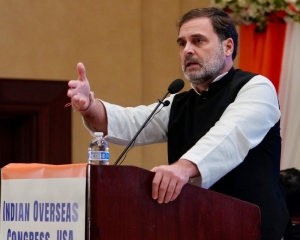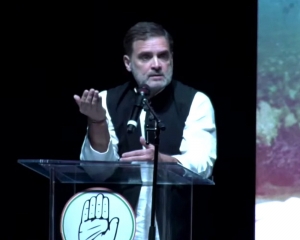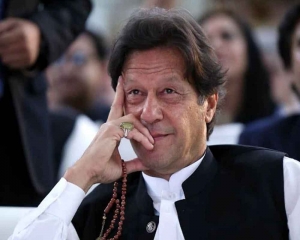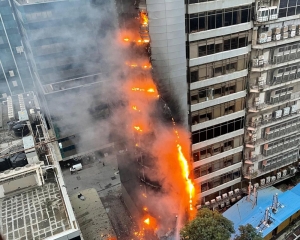Government's decision to grant a 20 per cent premium on natural gas from the state owned new wells has added complexity to the gas pricing regime
The decision of the Union Government to grant a 20 per cent premium over the APM price (a jargon for administered or controlled price) for any natural gas (NG) that state-owned Oil and Natural Gas Corporation (ONGC) and Oil India Limited (OIL) will produce from the ‘new wells or well interventions’ from their nominated fields has made the NG pricing more complicated. It is an outcome of a thought process that focuses on unshackling the oil and gas industry from price controls to start with but ends up exercising more controls.
Every year, India consumes 59.5 billion cubic metres (bcm) of NG. Of this, nearly 54 per cent or 32.13 bcm is produced domestically, and the balance is met from imports of liquefied natural gas (LNG). Of the domestic gas, around two-thirds is from blocks given on nomination to ONGC and OIL and from fields given under the New Exploration and Licensing Policy (NELP) (launched in 1999) as well as those given to private firms before the NELP. NG supplies from the aforementioned fields (known in common parlance as ‘legacy fields’) are governed by a particular pricing regime. Before April 2023, under the pricing guidelines effective since November 2014, supplies from these fields used to be a weighted average (WA) of prices of NG at four international locations: Henry Hub (the USA), Alberta Gas (Canada), NBP (National Balancing Point) (the UK), and Russian Gas. The prices used for arriving at the WA were over twelve months. It was revised every six months in a financial year (FY).
The four global hubs have fairly mature gas markets and the prices obtained there are pretty reasonable. Moreover, considering that the prices for twelve consecutive months were used for arriving at the WA, it smoothened out the month-to-month variations thereby ensuring that the price to the consumers was ‘stable’. From April 1, 2023, the government changed the above system based on the recommendations of the Kirit Parikh committee (2022). Under the new formula, for any given month, the price expressed per million British thermal units (Btu) (energy units used globally for setting NG prices) is arrived at by taking 10 per cent of the monthly average of the basket of Indian crude oil in the preceding month. The price thus calculated is subject to a price band of US$4 - 6.50 per Btu.The shift to link the price of NG with the crude oil price is flawed as natural gas is not a replacement for crude oil. The pricing of NG has to be on its own, especially when nearly half of the gas is used for urea production and power generation. Given the intimate connection of these sectors to food security and the need for affordable electricity (especially, for farmers and poor household consumers) and heavy subsidies are involved, the gas price has to be ‘reasonable’ and ‘stable’. While the earlier formula met both these requirements, the new one effective from April 2023 doesn’t as the volatility in crude prices and monthly revisions in NG price linked to crude can create uncertainties for both sectors. To avoid this, the government has put a price band.
What this means is even when the price determined based on crude linkage turns out to be higher (at the current Indian basket price of USD 77 per barrel, the NG price comes to US$ 7.7 per Btu) than the ceiling of US$ 6.50 per Btu, the price will be set at US$ 6.50 per mBtu. Given the movement in crude price since April 2023 and considering that in the near term, it will continue to rule well above US$ 75 per barrel, the formula-based price will always be much more than US$ 6.50 per Btu. So, the ceiling price will be the price to consumers thus rendering the formula redundant. Effectively, thus there is control on the gas price for two-thirds of domestic production and that too at a level, the government wants. One wonders whether a premium of 20 per cent allowed on gas supplied from the so-called ‘new wells’ or ‘well interventions’ in the nomination fields of ONGC and OIL will make any difference to the situation on the ground.
Applying a 20 per cent premium to the formula-determined price of US$ 7.7 per mBtu (77x0.1), we get US$ 9.24 per mBtu. But, then there is a cap of US$ 6.50 per mBtu. So, the price remains at US$ 6.50 per Btu. The purpose of giving premiums is defeated.On the other hand, if the government intends to build a 20 per cent premium on the ceiling price and give US$ 7.8 per mBtu then, it makes no sense to put a cap in the first place. The moot point is: if anyway ONGC and OIL are to be given a good price, let this be driven solely by the formula and putting a cap is unwarranted.
At least, there is an element of ‘predictability’; firms on their own can calculate as to what price they will be getting. But, here we have an APM price namely US$ 6.50 per mBtu (call it base price) that is arrived solely at the discretion of the bureaucrat. And, yet another price for supplies from the so-called ‘new wells’ or ‘well interventions’ which is arrived at by adding 20 per cent to this. This too is at the discretion of the bureaucrat. Moreover, which fields get the benefit of interventions will also be at his discretion.
Even the pricing of the remaining one-third of domestic NG supplied from the so-called deep/ultra-deep and high-pressure/high-temperature fields (KG-D6 operated by Reliance Industries and neighbouring KG-DWN-98/2 operated by ONGC in Krishna-Godavari basin off the Andhra Pradesh coast fall in this category) isn’t free from ‘discretion’ and ‘arbitrariness’. Technically though, the firms can go for competitive bidding to determine the price for such supplies (referred to as a ‘premium’ price), this too is subject to a ceiling linked to the prices of alternate fuels including fuel oil, naphtha, and LNG. On taking charge in 2014, the Modi – government started the process of reforming gas pricing by introducing formula-based pricing for legacy gas and thereafter in 2016 by permitting market-based pricing for supplies from deep/ultra-deep and high-pressure/high-temperature fields. But, it has ended up exercising control of both. Meanwhile, the Kirit Parikh committee had recommended the de-regulation of difficult gas fields’ prices by January 1, 2026, and the de-regulation of APM prices for gas supplies from the legacy fields by January 1, 2027. But, the government is silent on these recommendations. In fact, by adding more categories (read: ‘new wells’ and ‘well interventions’), it has given a signal that the administered/controlled pricing regime for NG and attendant bureaucratic red tape is here to stay.
Delivering the 75th Independence Day address on August 15, 2021, Prime Minister Narendra Modi set the country a target to achieve self-reliance in energy production by boosting the gas-based economy (besides giving a push to electric mobility and hydrogen production). He wanted the share of NG in the total energy mix to go up from the current around 6 per cent to 15 per cent. But, in the absence of a ‘stable’ and ‘predictable’ policy environment particularly when it comes to themost crucial aspect of pricing of gas, this won’t be possible.
(The writer is a policy analyst; views are persona)



















